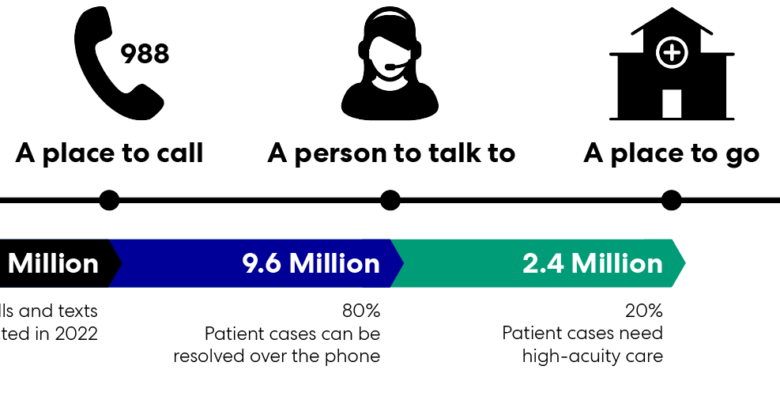Behavioral health needs are increasing at an alarming rate with one in five adults experiencing a mental illness of varying acuity. Prior research shows that 68 percent of adults with behavioral health conditions also have chronic medical comorbidities.
However, current behavioral health services are plagued by access, payment, and provider gaps. The lack of care continuity results in a failure to engage patients before their needs become severe. As a result, patients with behavioral health needs often present in the Emergency Department for initial treatment. Given that one out of every eight emergency department visits is due to a behavioral health issue, inappropriate utilization of the emergency department is a serious concern. The unpredictable volume of behavioral health patients prevents timely triage, increases wait times, stretches physicians, and requires a higher level of immediate, specialized care that strains many emergency departments. Consequently, behavioral health patients are often placed in emergency department spaces that are not designed to treat them, which can be dangerous and demoralizing for both patients and staff.
Some providers have begun to dedicate specialized support models that guarantee immediate access to psychiatric care and connect patients with ongoing support which improves overall emergency department patient throughput resulting in decreased wait times and length of stay. It also reduces utilization in admissions and readmissions and reduces the total cost of care for behavioral health patients. This research aims to provide insights into the myriad factors influencing the need for psychiatric crisis services and how design can be leveraged to support human-centered care. The research documents expert interviews with clinicians and behavioral health designers; interventions that serve behavioral health patients and the associated outcomes in the function and flow of emergency department services; ultimately facilitating the provision of quality acute care for patients in crisis.
This article originally appeared in Vol 14.02 of the Perkins&Will Research Journal. CLICK HERE to see the whole article.

